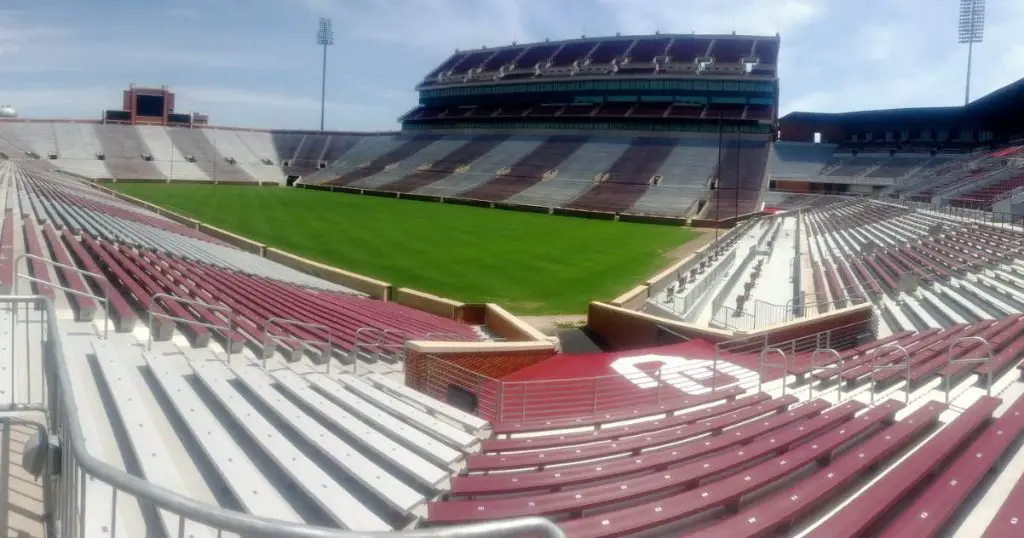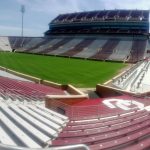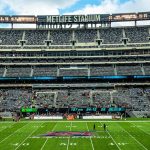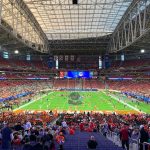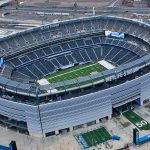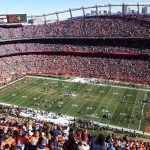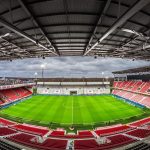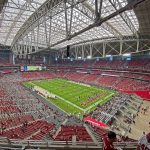It’s always great to see how stadiums in the US have developed over the decades, especially those that have a history that goes back to the 1920s.
This stadium in Oklahoma has an extensive history and has been expanded in recent years to become one of the biggest arenas in the country.
In this article, you’ll discover some of the most interesting facts about Gaylord Family Oklahoma Memorial Stadium, an incredible sports venue in Oklahoma for many reasons.
1 It’s located on the campus of the University of Oklahoma
Gaylord Family Oklahoma Memorial Stadium is a huge stadium located on the campus of the University of Oklahoma in Norman.
Norman is the third-largest city in Oklahoma and is part of the metropolitan area of Oklahoma City, the state capital.
It’s situated in the utmost southern part of this large metropolitan area which is home to over 1.3 million inhabitants.
Clad in red bricks, the stadium remarkably blends in with the other buildings on campus which makes it one of the most stunning stadiums in the US.
Because of this, it’s also commonly referred to as “The Palace on the Prairie.”
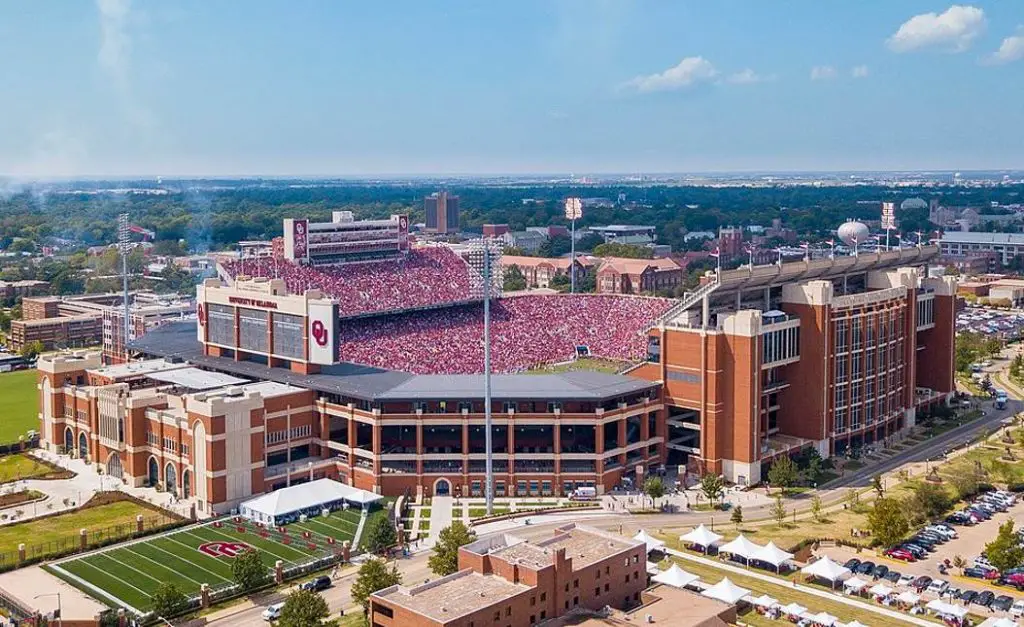
2. It has been the home of the Oklahoma Sooners football team since 1923
The stadium has been the home of the Oklahoma Sooners football team that represents the University of Oklahoma since 1923.
They are a member of the Big 12 Conference, an athletic conference headquartered in Irving, Texas. It’s part of the Division I Football Bowl Subdivision of the National Collegiate Athletic Association (NCAA).
The Sooners are one of the most successful teams in college football as they boast the most wins and the highest winning percentage.
The team was established in 1895, nearly 3 decades before they moved to their current home. Among their achievements over the decades are 7 national championships and 50 conference championships.
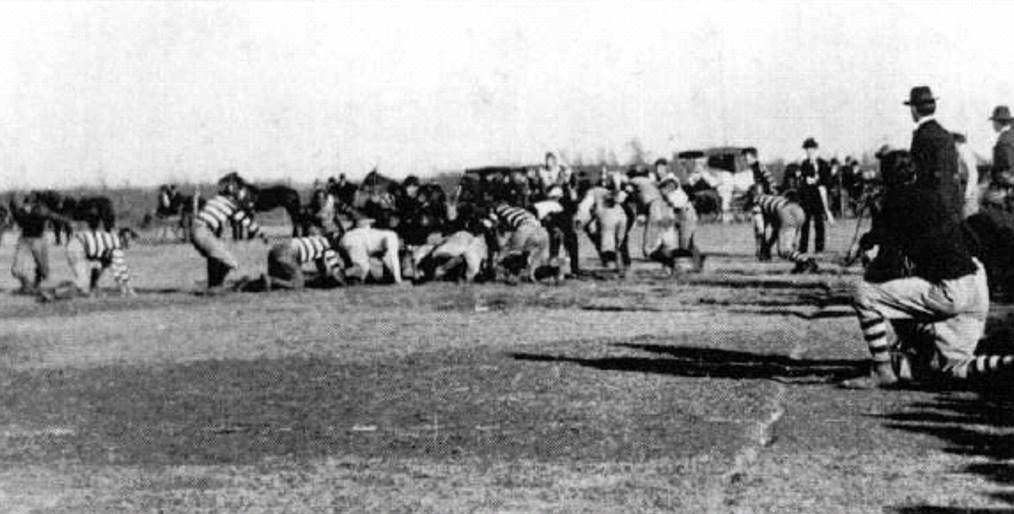
3. The stadium didn’t have permanent seats during the first two years
The Sooners became very successful in the first decades of the 20th century and a new stadium was long overdue by the early 1920s. Boyd Field, the original stadium, could hold 11,000 at its peak but wasn’t optimized.
Great plans were made but the initial version of the stadium didn’t feature more than a 500-seat bleacher area on the east side.
Between 1923 and 1925, this meager venue remained the home of the Sooners until permanent seats were installed to replace the bleachers. $293,000 was raised to build this section, the equivalent of over $4.5 million today.
By 1925, the stadium was named Oklahoma Memorial Stadium (in memory of the people who fought during World War I) and was equipped with a stand that could seat 16,000 spectators.
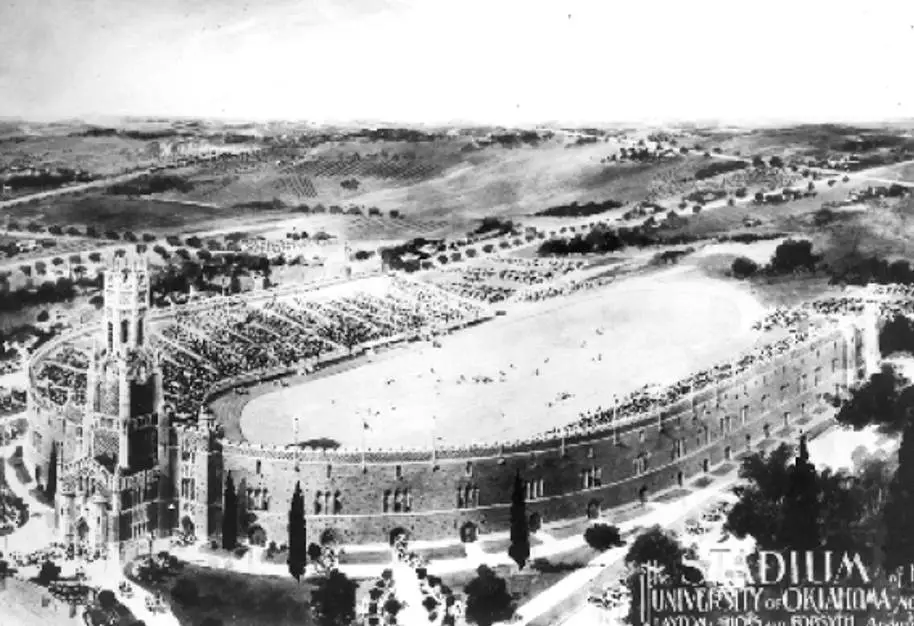
4. The field was named after the football coach who helped to raise funds
One of the most important people in the development of both the Oklahoma Sooners and the stadium was Bennie Owen (1875-1970).
Owen was a former football player who became the head coach of the Sooners between 1905 and 1926. He was one of the most successful football coaches n football history with a record of 155–60–19.
Although the stadium was named in honor of the WWI veterans, the playing surface was named after the successful coach in the 1920s and is still known as “Owen Field” today.
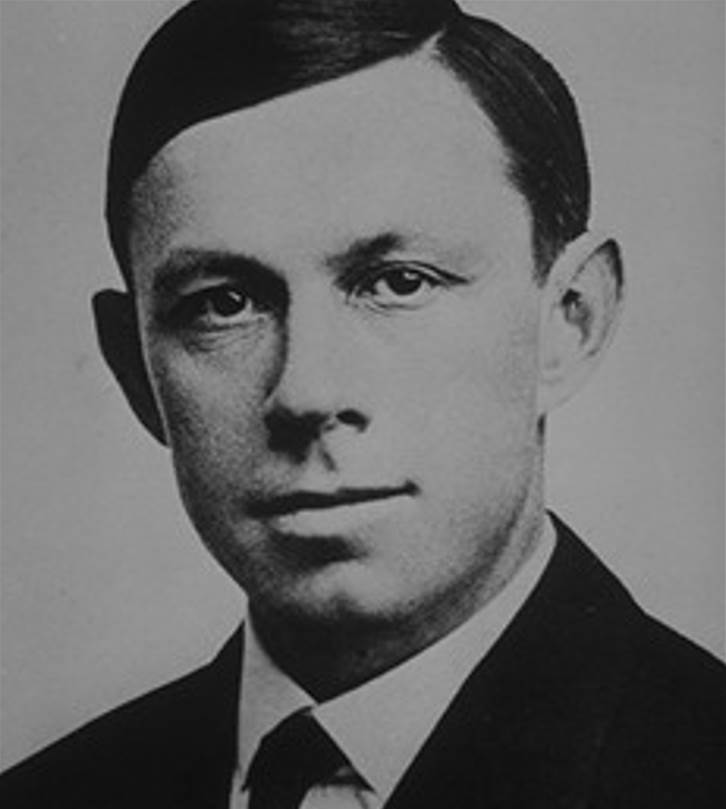
5. Gaylord Family Oklahoma Memorial Stadium got a horseshoe design in 1949
The stadium was expanded once again in 1929 with the addition of a new permanent stand on the east side of the playing field.
This doubled the capacity of the stadium to 32,000 seats (both end zones remained open), a number it held for multiple decades.
It wasn’t until the year 1949 that the north end of the stadium was enclosed which gave it the typical horseshoe design and 55,000 seats.
Bleachers were added in the south end zone in 1957 which further raised the capacity to 61,724 seats.
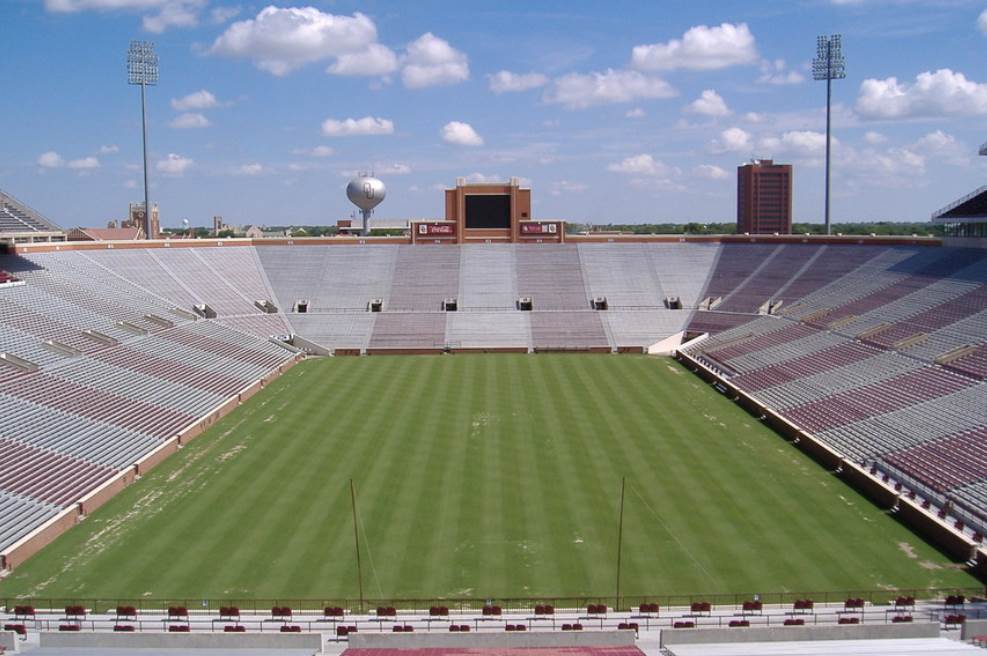
6. One of the most important expansion phases happened in the early 21st century
The stadium looked pretty much the same for the rest of the 20th century as it did following the expansion phase of the late 1950s.
The most notable addition in the following decades was the upper deck of the west stand which also featured a lounge and new press boxes.
During the 1970s, the stadium could already seat well over 70,000 spectators. Unfortunately, less than 3 decades later the facilities didn’t suffice to modern standards anymore.
Every seat in the stadium was replaced in 2002 and massive improvements were made to the infrastructure. $12 million of the $75 million budget was donated by the Gaylord Family, the owners of “The Oklahoman” at the time.
That’s why the stadium has been known as the Gaylord Family Oklahoma Memorial Stadium since 2002.
The most important addition during this project was the upper east deck which added 2,500 seats and 27 suites, bringing the capacity of the stadium to 83,469 seats.
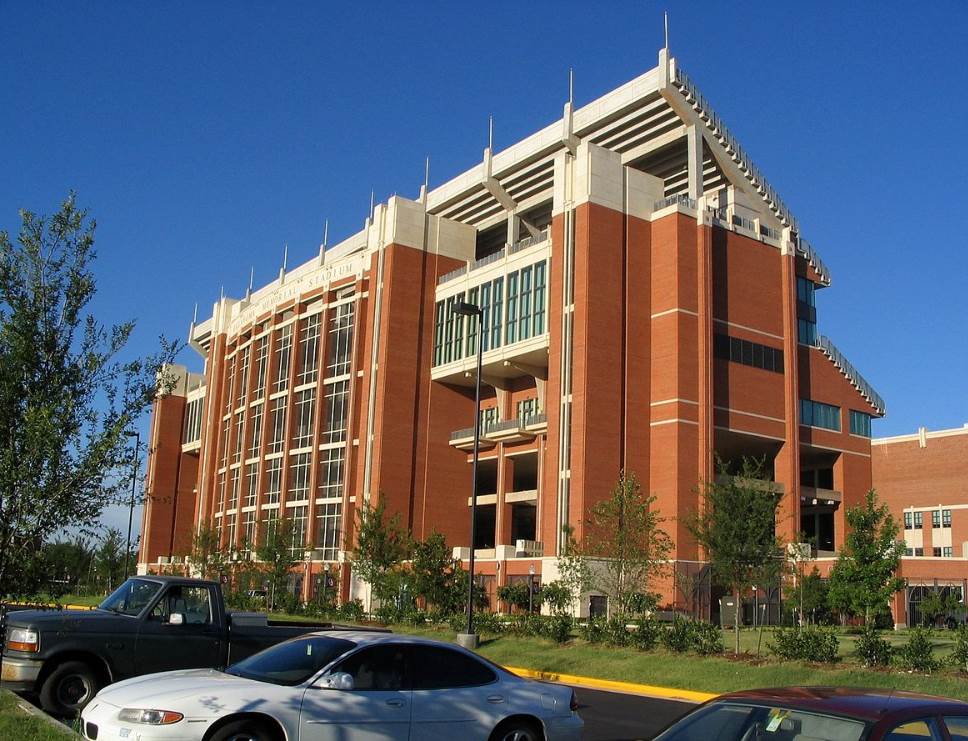
7. The stadium became completely enclosed before the 2015-2016 season
The stadium received another major upgrade over a decade later when another project was completed that completely enclosed the south end zone.
This section of the stadium still featured the bleachers that had been there for many decades. It was part of a much larger $160 million renovation and expansion phase.
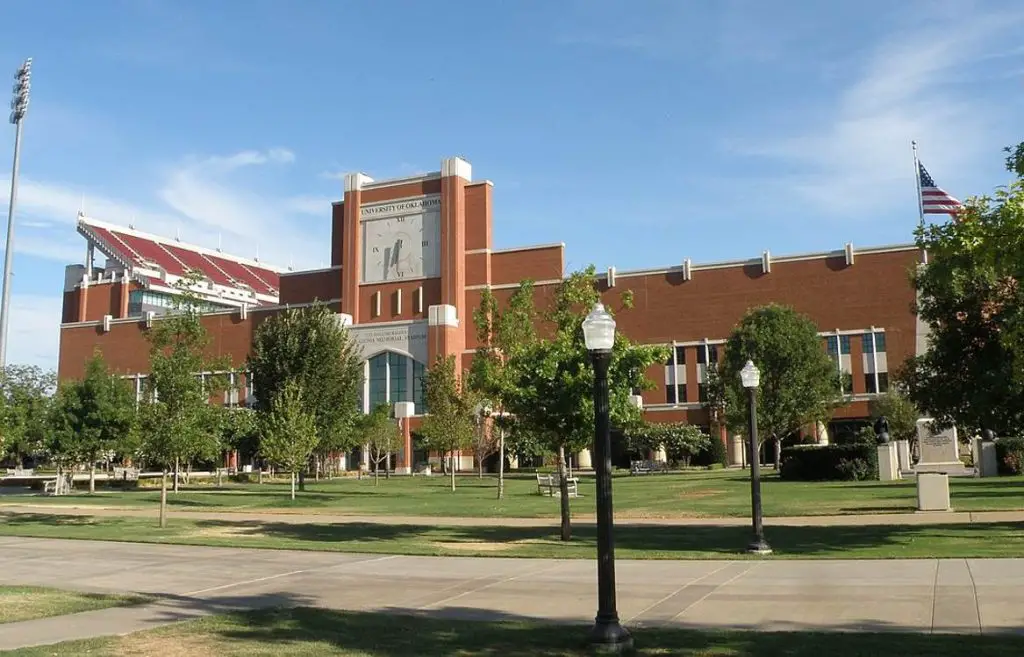
8. The stadium in Oklahoma is one of the top 30 biggest stadiums in the world
The amazing stadium that once started as a single-stand venue in 1925 has been transformed into one of the most stunning football stadiums in the United States.
It currently has a seating capacity of 86,112 seats which means it’s ranked 22 on our list of the biggest stadiums in the world.
It’s the 13th-biggest stadium in the United States and the second-largest in the Big 12 Conference. Only Darrell K Royal-Texas Memorial Stadium, the home of the Texas Longhorns is bigger with 100,119 seats.
